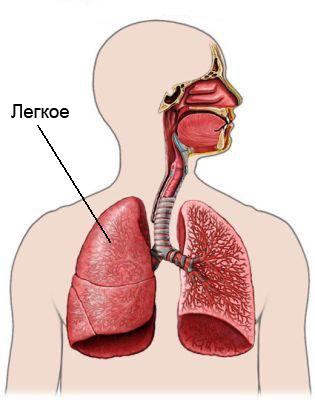Atelectasis – Collapsed lung
Description lung collapse
Atelectasis – state, in which part of the light stops working properly, or are unable to fully expand. In the normal state through the lungs into the body arrives oxygen and removes carbon dioxide. The lungs expand and contract, to support the exchange of these gases. Atelectasis is not a disease, and the state or a sign of the presence of disease or abnormalities in the body.

Causes of lung collapse
Reasons include atelectasis:
- Accumulation of fluid within or around the pulmonary;
- Infection;
- Blockage of airways in the lungs due to tumors, the presence of mucus or other foreign objects;
- Compression, as a result of emphysema, enlarged heart or tumors;
- Restricted chest movement, due to problems of bones, muscle or recent abdominal surgery;
- Scarring, resulting radiation therapy, frequent infections, or disease;
- Injuries;
- Pneumothorax (air leaks into the space, ambient light);
- Lung immaturity in premature babies.
Risk factors for lung collapse
Factors, that increase the risk include atelectasis:
- Advanced age;
- Miscarriage;
- Lung Diseases, such as:
- Asthma;
- Lung cancer;
- Эmfizema;
- Pulmonary edema;
- Pneumothorax;
- Pleural effusion;
- Smoking;
- Congestive heart failure;
- Obesity;
- Scoliosis;
- Disorders, that limit physical activity, such as stroke, spinal cord injury, problems with heart, injury or severe illness of any kind;
- Anesthesia, especially in patients, are obese or smoking;
- Breathing assistance 100% oxygen;
- Vyhanie foreign body, such as peanuts or dust;
- Damage to the chest wall.
The symptoms of lung collapse
The collapse of the lung can occur with no symptoms and signs. Small areas of irregularities in the lungs less likely to cause symptoms. The main symptom of atelectasis – reducing the amount of oxygen, ingested.
Symptoms, that can occur when a large area of injury include:
- Rapid breathing;
- Breathlessness;
- Frequent breaths;
- Cough;
- Reduced range expansion chest when breathing;
- Hripota;
- Fever;
- Cardiopalmus;
- Chest pain;
- Blue lips or fingernails.
Diagnosis of lung collapse
The doctor will ask about your symptoms and medical history, and perform a physical examination, which may include listening to the lung.
Tests may include:
- Chest X-ray – test, which uses X-rays, to carry out pictures easily and find the abnormal area;
- Bronchoscopy – It uses a thin tube, which is inserted through the throat, that allows to study the lungs and airways;
- Additional tests to assess the condition of the heart, blood vessels and airways.
Treating lung collapse
Treatment is aimed at addressing the root causes and maintaining an adequate supply of air. The collapse of the lung is usually held after the removal of its main causes. Atelectasis often goes away on its own, without treatment.
Treatment includes a lung collapse:
Physiotherapy
The therapist uses different techniques, to remove mucus from the lungs. You will be located so, the force of gravity to help drain secretions from the body. When you are in bed, to lie on the healthy side, to facilitate the drainage of fluid from the patient's lung.
Respiratory Therapy
It may include any or all of the following::
- The use of respiratory masks, to keep the airway open;
- Stimulation by spirometry, to perform deep breaths;
- Suctioning secretions;
- Using a ventilator if you can not breathe on their own.
Medication for the treatment of lung collapse
Medications may include:
- Preparations, to help open the airways;
- Drugs to treat the disease, which led to a collapse;
- Antibiotics to treat infections;
- Cardiac drugs to control heart disease;
- Inhalers and other drugs to treat asthma or emphysema;
- Oxygen, if you have any breathing problems.
Bronchoscopy
Bronchoscopy may be used to remove a foreign body or mucus, which blocks the airways.
Preventing lung collapse
Measures to prevent atelectasis are related to the possible causes of its appearance. These include:
- If you smoke, drop it;
- If you suffer from obesity, You need to lose weight;
- If you have chronic lung disease or heart disease, you need to follow your doctor's advice on the treatment of the disease and reduce complications arising;
- If you are pregnant, Have regular medical examination;
- Try not to inhale particulate matter. For Example, must be well chewed food, before swallowing;
- After surgery, breathe deeply and cough from time to time. Ask your doctor to provide the analgesic, If discomfort or restrict breathing expectoration.
